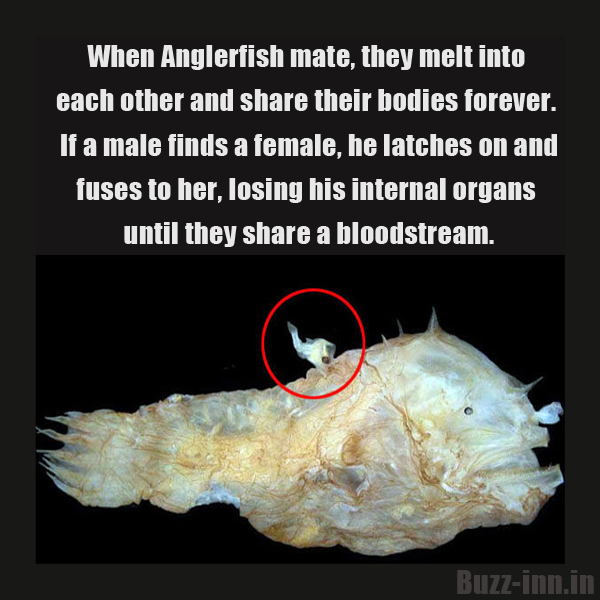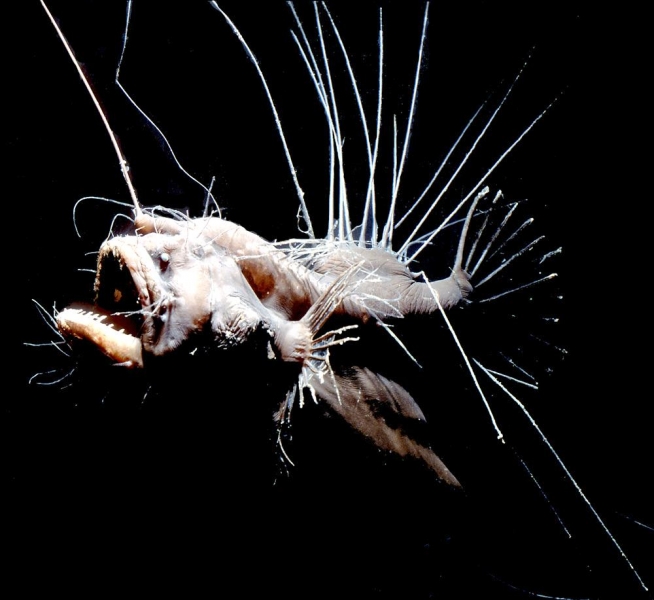

It is possible that the structures were reflecting the light of the Jakobsens’ submersible, but Pietsch believes the glow was bioluminescent, or emitted by the fish itself. In the video, the anglerfish’s filaments and fin-rays also appeared to be glowing. “They can’t afford to let a meal go by because there’s so little to eat down there.” “Any prey item touching one of those would cause the angler to turn and gobble up that particular animal,” Pietsch tells Langin of Science. jordani move independently, each one contains its own set of muscles and a long nerve. While the filaments and fin-rays of most other fish move as a single unit, those of C.

jordani has an unusual body structure that has not been observed before. Scientists were able to see, for example, that C. But the Jakobsens’ video allows researchers to observe anglerfish in their natural habitat. Scientists already knew that anglerfish mated in this way dead male anglerfish have been found attached to dead females. The pair’s circulatory systems and tissue fuse, and the male becomes a “sexual parasite.” He survives on nutrients in the female’s blood, and in exchange, he provides the female with sperm when she is ready to spawn. When a male zeroes in on a partner, he bites down on her and will not let go. Though they are tiny, male anglerfish have relatively large eyes and nostrils, which help them detect a chemical attractant that females emit. In Jakobsen’s video, the female anglerfish, which is about six inches long, drifts through the water. “It’s so wonderful to have a clear window on something only imagined before this.”

“This is a unique and never-before-seen thing,” Pietsch says in a University of Washington statement. jordani preserved in museum collections, but a live male had never been observed before. According to Elaina Zachos of National Geographic, there are 14 specimens of female C. Pietsch identified the critters as belonging to the Caulophryne jordani species (also known as the fanfin seadevil). After the explorers surfaced, they sent their video to Ted Pietsch, a leading deep-sea fish expert at the University of Washington in Seattle. They filmed the fish and her mate for 25 minutes. Even more remarkably, she had a male anglerfish attached to her belly, marking the first time that the creature’s odd mating habits have been caught on film.Įxplorers Kirsten and Joachim Jakobsen were cruising through the deep waters around Portugal’s Azores islands in a submersible when they spotted “something with a funny form,” Kristen tells Langin. But because anglerfish swim in the cold, dark depths of the ocean, they are scarcely seen alive in their natural environment.įortunately, as Katie Langin reports in an exclusive for Science, a pair of deep-sea explorers captured rare footage of a female anglerfish floating through the ocean.
#Angler fish reproduction full
Their mouths are gaping and full of sharp fangs, their bodies are dotted with tendril-like filaments and fin-rays, and their heads are crowned with a dangling, bioluminescent lure that draws unsuspecting prey straight to their jaws. The project was supported by the Rebikoff-Niggeler Foundation, a science foundation operating in Portugal’s Azores Archipelago.Deep-sea anglerfish are a strange and fascinating sight to behold. Usually they use it to perform seabed mapping, for the collection of oceanographic data and to film for nature documentaries including Blue Planet. “It's basically a propelled deep-sea camera with the camera operators sitting inside the 1.40m diameter acrylic lens,” say the Jakobsens, and has been in operation since 2013. The vehicle is able to take quality photos and videos at depths of up to 1,000 metres. Kirsten and Joachim Jakobsen took this shot on their LULA1000 submersible vehicle at a depth of 800 metres “in a zone characterized by steep, partially vertical walls" just off the south slope of São Jorge Island, Azores. To reproduce, a male anglerfish has to locate a female in the deep sea and attach himself to her, leading to a permanent fusion of tissues and the interconnection of their two circulatory systems. She’s about 16 centimetres in length, linked to a three centimetre male. This beauty is an “apparently gravid” – pregnant, or egg-laden – female with a sexually parasitic dwarf male attached to her belly. The Fanfin Seadevil deep-sea anglerfish has been caught mating on camera for the first time.


 0 kommentar(er)
0 kommentar(er)
